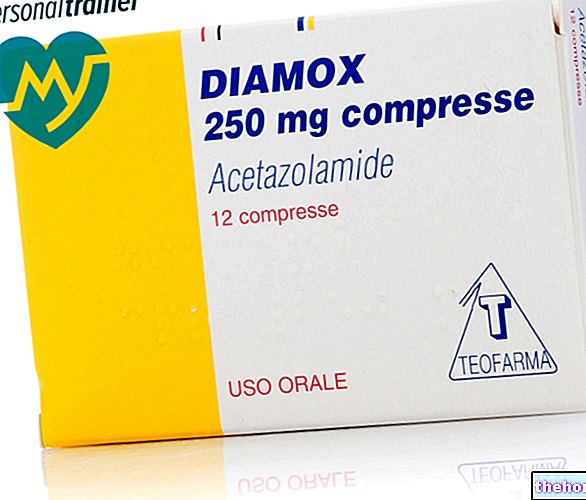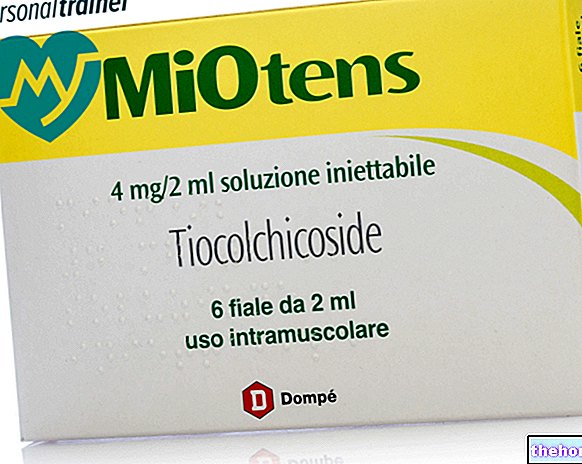Active ingredients: Gemfibrozil
GEMFIBROZIL DOC Generici 600 mg film-coated tablets
GEMFIBROZIL DOC Generici 900 mg film-coated tablets
Why is Gemfibrozil used - Generic drug? What is it for?
This medicine contains the active substance gemfibrozil, which belongs to the class of medicines that lower cholesterol and fat levels in the blood. GEMFIBROZIL DOC Generici is indicated as an adjunct to a low-fat diet or other non-pharmacological treatments (physical activity, weight reduction), for the treatment of:
- high levels of fat in the blood (severe hypertriglyceridaemia), both in the absence and in the presence of low cholesterol levels (HDL cholesterol);
- high levels of fat in the blood (mixed hyperlipidaemia), when treatments with other medicines called statins are not possible;
- high levels of cholesterol in the blood (primary hypercholesterolaemia), when treatments with other medicines called statins are not possible.
This medicine is also used to prevent the risk of heart and blood circulation diseases (cardiovascular disease), when blood cholesterol levels (non-HDL) are high and other medicines called statins cannot be taken.
Contraindications When Gemfibrozil should not be used - Generic drug
Do not take GEMFIBROZIL DOC Generici
- if you are allergic to gemfibrozil or any of the other ingredients of this medicine (listed in section 6);
- if you have liver problems (hepatic impairment); - if you have severe kidney problems (severe kidney impairment);
- if you have or have suffered from gallbladder or liver problems (gallbladder or biliary tract disease, including gallstones);
- if you are using repaglinide, a medicine used to treat diabetes;
- if in the past you have suffered from allergic or toxic disorders of the skin exposed to light (photoallergy or phototoxic reactions) during treatment with medicines of the same class as GEMFIBROZIL DOC Generici (fibrates).
Precautions for use What you need to know before taking Gemfibrozil - Generic drug
Talk to your doctor or pharmacist before taking GEMFIBROZIL DOC Generici.
Take special care and talk to your doctor if you have pain in your muscles during treatment with this medicine (widespread myalgia and tenderness) and if your blood tests show you particularly high levels of a substance produced by the muscles (creatine kinase CPK,> 5x ULN). In this case, talk to your doctor as muscle damage (myopathy, rhabdomyolysis) may occur, especially if you are taking other medicines that lower blood fat levels (other fibrates or HMGCoA reductase inhibitors, see section Other medicines and GEMFIBROZIL DOC Generici ).
Treatment with GEMFIBROZIL DOC Generici in combination with other medicines that lower blood fat levels (HMG-CoA reductase inhibitors) should be carefully evaluated by your doctor especially if you have a predisposition to muscle diseases (myopathies and rhabdomyolysis), this risk increases if:
- suffer from kidney problems;
- your thyroid gland is poorly functioning (hypothyroidism);
- habitually uses large quantities of alcohol;
- is over 70 years old;
- you or someone in your family has suffered from hereditary muscle disorders;
- you have suffered from muscle problems in the past after taking other medicines that lower blood fat levels (fibrates or HMG-CoA reductase inhibitors).
Also, before starting combination treatment with multiple medicines, your doctor will need to check your creatine phosphokinase (CPK) levels.
This medicine can increase the elimination of cholesterol in the bile and therefore the formation of gallstones (cholelithiasis) may occur during treatment with this medicine, therefore it is recommended to carry out checks and to stop the treatment if the presence of stones is found. .
Your doctor will have you periodically checked:
- blood fat levels; a temporary increase in cholesterol (total and LDL) may occur. If after 3 months of treatment your condition does not improve, it is necessary to stop the treatment and your doctor will suggest an alternative therapy;
- liver enzyme levels (ASAT and ALAT transaminases, alkaline phosphatase, LDH, CK and bilirubin);
- blood count (complete blood count with leukocyte formula), during the first 12 months of treatment.
Children and adolescents
The use of this medicine in children and adolescents is not recommended.
Interactions Which drugs or foods can modify the effect of Gemfibrozil - Generic drug
Tell your doctor or pharmacist if you are taking, have recently taken or might take any other medicines.
Take this medicine with caution and tell your doctor if you are taking:
- medicines used to treat diabetes (oral agents and insulin) including rosiglitazone;
- other medicines used to lower blood fat levels (bile acid binding resins such as colestipol, HMG-CoA reductase inhibitors, such as simvastatin, lovastatin, pravastatin and rosuvastatin, see Warnings and precautions);
- medicines used to treat some circulation disorders (oral anticoagulants) as it can increase the risk of bleeding; in this case it is necessary to reduce the dose of these medicines;
- bexarotene, a medicine used to treat certain types of cancer (lymphomas).
Warnings It is important to know that:
Pregnancy and breastfeeding
If you are pregnant or breast-feeding, think you may be pregnant or are planning to have a baby, ask your doctor or pharmacist for advice before taking this medicine.
Do not take this medicine if you are pregnant unless absolutely necessary and under direct medical supervision.
Do not take this medicine if you are breastfeeding.
Driving and using machines
This medicine may rarely cause dizziness and visual disturbances which may affect the ability to drive and use machines. If these effects occur, avoid driving and using machines.
Dose, Method and Time of Administration How to use Gemfibrozil - Generic drug: Posology
Always take this medicine exactly as your doctor or pharmacist has told you. If in doubt, consult your doctor or pharmacist.
Use in adults and the elderly
The recommended dose is between 900 mg and 1200 mg per day.
If you have been prescribed a dose of 900 mg per day, take it as a single dose 30 minutes before your evening meal.
If you have been prescribed a dose of 1200 mg per day, take it as two separate doses of 600 mg each, one 30 minutes before breakfast and the other 30 minutes before your evening meal.
Use in patients with kidney problems
If you have kidney problems (mild to moderate renal insufficiency), the recommended starting dose is 900 mg per day. Your doctor will increase this dose based on how your kidneys are working.
If you have severe kidney problems you should not take this medicine.
If you forget to take GEMFIBROZIL DOC Generici
Do not take a double dose to make up for a forgotten tablet.
If you have any further questions on the use of this medicine, ask your doctor or pharmacist.
Overdose What to do if you have taken an overdose of Gemfibrozil - Generic drug
Abdominal cramps, diarrhea, pain in joints and muscles, nausea and vomiting, increased levels of a substance produced by the muscles (creatinine phosphokinase, CPK), abnormal liver function tests may occur in the event of overdose. If you have swallowed / taken too much of this medicine, notify your doctor immediately or go to the nearest hospital.
Side Effects What are the side effects of Gemfibrozil - Generic drug
Like all medicines, this medicine can cause side effects, although not everybody gets them.
The following side effects may occur:
Very common (may affect more than 1 in 10 people)
- digestive disturbances (dyspepsia).
Common (may affect up to 1 in 10 people)
- dizziness, headache (headache);
- abdominal pain, diarrhea, flatulence, nausea, vomiting and constipation;
- skin irritation (eczema, rash);
- fatigue.
Uncommon (may affect up to 1 in 100 people)
- heart beating disturbances (atrial fibrillation).
Rare (may affect up to 1 in 1,000 people)
decrease in the level of platelets (thrombocytopenia); - sharp decrease in red blood cell levels (severe anemia); - decreased levels of white blood cells and bone marrow functioning (leukopenia, eosinophilia, bone marrow hypoplasia); - dizziness, sleepiness; - tingling sensation (paraesthesia); - inflammation of the nerves (peripheral neuritis); - depression; - decreased sexual desire; - blurred vision; - inflammation of the pancreas (pancreatitis); - appendicitis; - liver disorders (cholestatic jaundice, impaired liver function, hepatitis, cholelithiasis, cholecystitis); - skin irritation (exfoliative dermatitis, dermatitis, urticaria) and itching; - hair loss (alopecia); - pain in the joints (arthralgia, synovitis) and muscles (myalgia, myopathy, myasthenia, myositis, rhabdomyolysis), pain in the arms and legs due to the increase in creatinine phosphokinase; - sexual disorders (impotence); - sensitivity of the skin to light (photosensitivity); - swelling due to fluid build-up around the mouth and eyes (angioedema), swelling of the throat (laryngeal edema).
Reporting of side effects
If you get any side effects, talk to your doctor or pharmacist. This includes any possible side effects not listed in this leaflet. You can also report side effects directly via the national reporting system at www.agenziafarmaco.it/it/responsabili. By reporting side effects you can help provide more information on the safety of this medicine.
Expiry and Retention
Keep this medicine out of the sight and reach of children.
Do not use this medicine after the expiry date which is stated on the package. The expiry date refers to the last day of that month.
Do not throw any medicines via wastewater or household waste. Ask your pharmacist how to throw away medicines you no longer use. This will help protect the environment.
Other information
What GEMFIBROZIL DOC Generici contains
GEMFIBROZIL DOC Generici 600 mg film-coated tablets
- The active ingredient is gemfibrozil. Each tablet contains 600 mg of gemfibrozil.
- The other ingredients are anhydrous colloidal silica, microcrystalline cellulose, pregelatinised starch, polysorbate 80, magnesium stearate, sodium carboxymethyl starch, hydroxypropylmethylcellulose, titanium dioxide, talc, polyethylene glycol 6000, polydimethylsiloxane.
GEMFIBROZIL DOC Generici 900 mg film-coated tablets
- The active ingredient is gemfibrozil. Each tablet contains 900 mg of gemfibrozil.
- The other ingredients are anhydrous colloidal silica, silicon dioxide, pregelatinised starch, polysorbate 80, magnesium stearate, sodium carboxymethyl starch, hydroxypropylmethylcellulose, titanium dioxide, talc, polyethylene glycol 6000, polydimethylsiloxane.
What GEMFIBROZIL DOC Generici looks like and contents of the pack
GEMFIBROZIL DOC Generici 600 mg film-coated tablets
White, oval and biconvex film-coated tablets.
Pack of 30 tablets.
GEMFIBROZIL DOC Generici 900 mg film-coated tablets
White, oval, biconvex and scored film-coated tablets. The score line is not designed to break the tablet.
Pack of 20 tablets.
Source Package Leaflet: AIFA (Italian Medicines Agency). Content published in January 2016. The information present may not be up-to-date.
To have access to the most up-to-date version, it is advisable to access the AIFA (Italian Medicines Agency) website. Disclaimer and useful information.
01.0 NAME OF THE MEDICINAL PRODUCT
GEMFIBROZIL DOC GENERICI TABLETS COATED WITH FILM
02.0 QUALITATIVE AND QUANTITATIVE COMPOSITION
Each tablet contains 600 mg or 900 mg of gemfibrozil
For excipients, see section 6.1.
03.0 PHARMACEUTICAL FORM
Film-coated tablets.
Description:
GEMFIBROZIL DOC Generici 600 mg: white, biconvex, oval film-coated tablet
GEMFIBROZIL DOC Generici 900 mg: white, biconvex, oval, scored, film-coated tablet
04.0 CLINICAL INFORMATION
04.1 Therapeutic indications
GEMFIBROZIL DOC Generici is indicated as an adjunct to diet and other non-pharmacological treatments (e.g. exercise, weight reduction) for:
- Treatment of severe hypertriglyceridaemia with or without low HDL cholesterol levels.
- Mixed hyperlipidaemia, when a statin is contraindicated or not tolerated.
- Primary hypercholesterolemia, when the use of a statin is contraindicated or not tolerated
Primary prevention
Reduction of cardiovascular morbidity in male patients with elevated non-HDL cholesterol levels and an elevated risk for a first cardiovascular event when the use of a statin is contraindicated or not tolerated (see section 5.1).
04.2 Posology and method of administration
Before starting treatment with gemfibrozil, other medical problems such as hypothyroidism and diabetes mellitus need to be controlled as best as possible and patients should be placed on a standard low-fat diet which should be continued during treatment.
GEMFIBROZIL DOC Generici should be taken orally.
Adults
The dosage regimen is 900 mg-1200 mg per day.
The only dose for which effects on morbidity have been documented is 1200 mg per day.
The dose of 1200 mg per day should be taken in two doses of 600 mg to be taken half an hour before breakfast and half an hour before the evening meal.
The 900 mg dose should be taken as a single dose half an hour before the evening meal.
Elderly (over 65 years of age)
Same posology used in adults.
Children and adolescents
Gemfibrozil therapy has not been evaluated in children. Due to lack of data the use of GEMFIBROZIL DOC Generici in children is not recommended.
Renal impairment
In patients with mild to moderate renal impairment (glomerular filtration rate 50 - 80 and 30 - 2, respectively), start treatment at a daily dose of 900 mg and evaluate renal function before increasing the dose.
GEMFIBROZIL DOC Generici should not be used in patients with severe renal impairment (see section 4.3).
Hepatic impairment
Gemfibrozil is contraindicated in patients with hepatic impairment (see section 4.3).
04.3 Contraindications
Hypersensitivity to gemfibrozil or to any of the excipients.
Hepatic impairment.
Severe renal impairment.
Previous or current disease of the gallbladder or biliary tract, including gallstones.
Concomitant use of repaglinide (see section 4.5).
Patients with a history of photoallergy or phototoxic reactions during treatment with fibrates.
04.4 Special warnings and appropriate precautions for use
Muscle disorders (myopathy / rhabdomyolysis)
Cases of myositis, myopathy and marked increase in creatine phosphokinase have been reported in association with the use of gemfibrozil. Rhabdomyolysis has also been reported rarely. In all patients presenting with diffuse myalgia, muscle tenderness and / or marked increase in muscle CPK levels (> 5x ULN) the possibility of muscle damage should be considered; in these conditions treatment should be stopped.
Concomitant intake of HMG CoA reductase inhibitors
The risk of muscle damage may be increased by concomitant administration of an HMG CoA reductase inhibitor. Pharmacokinetic interactions may also occur (see also section 4.5) and dosage adjustment may be necessary.
The benefit of further changes in lipid levels following concomitant administration of gemfibrozil and an HMG CoA reductase inhibitor should be carefully weighed against the potential risks of such combinations and clinical monitoring is recommended.
Creatine phosphokinase (CPK) level should be measured before starting treatment with this combination in patients with predisposing factors for rhabdomyolysis, such as the following:
• Renal impairment
• Hypothyroidism
• Alcohol abuse
• Age> 70 years
• Personal or family history of hereditary muscle disorders
• Personal history of muscle toxicity with another fibrate or with an HMG-CoA reductase inhibitor
• In many subjects in whom the lipid response to treatment with single drugs alone has not been satisfactory, the possible benefits of a combination therapy with HMG-CoA reductase inhibitors and gemfibrozil do not outweigh the risks of severe myopathy, rhabdomyolysis and acute renal failure.
Use in patients with biliary lithiasis
Gemfibrozil may increase the excretion of cholesterol in the bile leading to possible stone formation. Cases of cholelithiasis have been reported during treatment with gemfibrozil.
In case of suspected cholelithiasis, it is recommended to carry out tests for the detection of stones. Gemfibrozil treatment should be discontinued if stones are found.
Monitoring of serum lipids
Periodic monitoring of serum lipids is required during treatment with gemfibrozil.
Sometimes a paradoxical increase in cholesterol (total and LDL) may occur in patients with hypertriglyceridaemia. If response to treatment is insufficient after 3 months of therapy at recommended doses, treatment should be discontinued and alternative treatment methods considered.
Monitoring of liver function
Elevated levels of ALAT, ASAT, alkaline phosphatase, LDH, CK and bilirubin have been reported which are usually reversible when gemfibrozil treatment is stopped. Therefore, liver function tests should be performed periodically. Gemfibrozil therapy should be discontinued if these changes persist.
Monitoring of the blood count with leukocyte formula
Periodic white blood cell count determinations are recommended during the first 12 months of treatment with gemfibrozil. Anemia, leukopenia, thrombocytopenia, eosinophilia and bone marrow hypoplasia have been reported rarely (see section 4.8).
Interactions with other medicinal products (see also sections 4.3 and 4.5)
Concomitant use with substrates of CYP2C8, CYP2C9, CYP2C19, CYP1A2, UGTA1 and UGTA3
The interaction profile of gemfibrozil is complex resulting in increased exposure to many medicinal products when co-administered with gemfibrozil.
Gemfibrozil potently inhibits CYP2C8, CYP2C9, CYP2C19, CYP1A2, UGTA1 and UGTA3 enzymes (see section 4.5).
Concomitant use with hypoglycemic drugs
Cases of hypoglycaemic crises have been reported following the concomitant use of gemfibrozil and hypoglycemic drugs (oral agents and insulin). Monitoring of plasma glucose levels is recommended.
Concomitant use of oral anticoagulants
Gemfibrozil may potentiate the effects of oral anticoagulants and this requires careful monitoring of anticoagulant dosages. Care should be taken when anticoagulants are administered in combination with gemfibrozil. Dosage of anticoagulants may need to be reduced to maintain desired prothrombin levels (see section 4.5).
04.5 Interactions with other medicinal products and other forms of interaction
The interaction profile of gemfibrozil is complex. In vivo studies indicate that gemfibrozil is a potent inhibitor of CYP2C8 (an enzyme important for the metabolism, e.g. of repaglinide, rosiglitazone and paclitaxel). In vitro studies have shown that gemfibrozil is a strong inhibitor of CYP2C9 (an enzyme involved in the metabolism, e.g. of warfarin and glimepiride), but also of CYP2C19, CYP1A2 and UGTA1 and UGTA3 (see section 4.4).
Repaglinide
The combination of gemfibrozil and repaglinide is contraindicated (see section 4.3). Concomitant administration of the two drugs resulted in an 8-fold increase in plasma concentrations of repaglinide, possibly due to inhibition of the CYP2C8 enzyme, resulting in hypoglycaemic crises.
Rosiglitazone
The combination of gemfibrozil and rosiglitazone should be done carefully. Concomitant administration of rosiglitazone resulted in a 2.3-fold increase in systemic exposure of rosiglitazone, possibly due to inhibition of the CYP2C8 enzyme (see section 4.4).
HMG CoA reductase inhibitors
Concomitant use of gemfibrozil and a statin should generally be avoided (see section 4.4.). The use of fibrates alone is occasionally associated with myopathy. When fibrates are co-administered with statins, an increased risk of muscle adverse events, including rhabdomyolysis, has been reported.
Gemfibrozil was also shown to affect the pharmacokinetics of simvastatin, lovastatin, pravastatin and rosuvastatin. Gemfibrozil caused an approximately 3-fold increase in simvastatin AUC, possibly due to inhibition of glucuronidation by UGTA1 and UGTA3, and an increase in 3 fold in the AUC of pravastatin which may be due to interference with transport proteins. One study indicated that coadministration of a single 80 mg dose of rosuvastatin in healthy volunteers receiving gemfibrozil (600 mg twice daily ) caused a 2.2-fold increase in the mean Cmax and a 1.9-fold increase in the mean AUC of rosuvastatin.
Oral anticoagulants
Gemfibrozil may potentiate the effects of oral anticoagulants and this requires careful monitoring of the dose of anticoagulants (see section 4.4).
Bexarotene
Co-administration of gemfibrozil with bexarotene is not recommended. A "population analysis to evaluate plasma concentrations of bexarotene in patients with cutaneous T-cell lymphoma (CTCL) indicated that concomitant administration of gemfibrozil significantly increases plasma concentrations of bexarotene."
Resins binding bile acids
When gemfibrozil is co-administered with resin-based drugs, such as colestipol, a reduction in the bioavailability of gemfibrozil may occur. It is recommended to carry out the administration two or more hours apart.
Gemfibrozil is highly bound to plasma proteins and displacement interactions with other drugs are possible.
04.6 Pregnancy and breastfeeding
Pregnancy
There are no adequate studies on the use of GEMFIBROZIL DOC Generici in pregnant women. Animal studies are insufficient to draw conclusions regarding the effects on pregnancy and fetal development (see section 5.3). The potential risk for humans is not it's known.
GEMFIBROZIL DOC Generici should not be used during pregnancy unless absolutely necessary.
Feeding time
There are no data on the excretion of gemfibrozil in breast milk. GEMFIBROZIL DOC Generici should not be used during lactation.
04.7 Effects on ability to drive and use machines
No studies on the ability to drive and use machines have been performed. In isolated cases, dizziness and visual disturbances may occur which may adversely affect the ability to drive.
04.8 Undesirable effects
The most commonly reported undesirable effects are gastrointestinal in nature and occur in approximately 7% of patients. These adverse reactions generally do not require discontinuation of treatment.
Adverse reactions are ranked by frequency using the following convention:
very common (> 1/10), common (> 1/100, 1 / 1,000, 1 / 10,000,
Platelets and bleeding disorders
Rare: thrombocytopenia
Alterations of erythrocytes
Rare: severe anemia. Mild decreases in hemoglobin and hematocrit were observed in the initial phase of treatment with gemfibrozil.
Alterations of leukocytes and the reticuloendothelial system
Rare: leukopenia, eosinophilia, bone marrow hypoplasia. A reduction in leukocytes was observed in the initial phase of gemfibrozil treatment.
Central and peripheral nervous system
Common: dizziness, headache.
Rare: dizziness, somnolence, paraesthesia, peripheral neuritis, depression, decreased libido.
Visual disturbances
Rare: blurred vision.
Changes in heart rate and heart rhythm
Uncommon: atrial fibrillation.
Gastrointestinal disorders
Very common: dyspepsia.
Common: abdominal pain, diarrhea, flatulence, nausea, vomiting, constipation.
Rare: pancreatitis, acute appendicitis.
Alterations of the hepato-biliary system
Rare: cholestatic jaundice, impaired liver function, hepatitis, cholelithiasis, cholecystitis.
Alterations of the skin and skin appendages
Common: eczema, rash.
Rare: exfoliative dermatitis, dermatitis, pruritus, alopecia.
Musculoskeletal system disorders
Rare: arthralgia, synovitis, myalgia, myopathy, myasthenia, pain in extremity and myositis associated with an increase in creatine kinase (CK), rhabdomyolysis.
Alterations of the urinary tract
Rare: impotence.
General unrest
Common: fatigue.
Rare: photosensitivity, angioedema, laryngeal edema, urticaria.
04.9 Overdose
Cases of overdose have been reported. Symptoms reported with overdose were abdominal cramps, abnormal liver function tests, diarrhea, increased CPK, joint and muscle pain, nausea and vomiting. Patients made a full recovery. In the event of an overdose, symptomatic supportive measures should be taken.
05.0 PHARMACOLOGICAL PROPERTIES
05.1 Pharmacodynamic properties
Pharmacotherapeutic group: lipid-lowering drugs.
Chemical subgroup: fibrates.
ATC code: C10A B04.
Gemfibrozil is a non-halogenated phenoxypentanoic acid. Gemfibrozil is an agent that regulates lipid levels and lipid fractions.
The mechanism of action of gemfibrozil has not been definitively established. In humans, gemfibrozil stimulates the peripheral lipolysis of lipoproteins rich in triglycerides such as VLDL and chylomicrons (through the stimulation of LPL). Gemfibrozil also inhibits the synthesis of VLDL in the liver.
Gemfibrozil increases the subfractions of HDL2 and HDL3 as well as apolipoprotein A-I and A II.
Animal studies suggest that the turnover and removal of cholesterol from the liver is increased by gemfibrozil.
In the Helsinki Heart Study, a large placebo-controlled study involving 4,081 male subjects, aged 40 to 55 years, with primary dyslipidemia (mainly with an increase in non-HDL cholesterol ± hypertriglyceridaemia), but with no history of coronary artery disease, administration of gemfibrozil 600 mg twice daily resulted in a significant reduction in total plasma triglycerides, total cholesterol and low density lipoproteins and a significant increase in high density lipoproteins. The cumulative ratio of cardiac endpoints (cardiac mortality and non-fatal myocardial infarction) over the 5-year follow-up was 27.3 / 1000 in the gemfibrozil group (56 subjects) and 41.4 / 1000 in the placebo group ( 84 subjects) showing a relative risk reduction of 34.0% (95% confidence interval; 8.2 to 52.6, non-fatal myocardial pinfarction and a 26% reduction in cardiac death cases.
However, the number of all-cause deaths was comparable (44 in the gemfibrozil group and 43 in the placebo group). Diabetic patients and those with severe changes in lipid fractions showed a 68% and 71% reduction in cardiac endpoints, respectively.
There is evidence that fibrate treatment can reduce coronary heart disease events, but fibrates have not been shown to reduce all-cause mortality in primary or secondary prevention of cardiovascular disease.
The VA-HIT double-blind study compared gemfibrozil (1200 mg daily) with placebo in 2,531 males with a history of coronary artery disease, 31% lower HDL-C triglyceride levels in the gemfibrozil group compared to the placebo group .
The primary event of non-fatal myocardial infarction or cardiac death was recorded in 17.3% of patients treated with gemfibrozil and 21.7% of patients treated with placebo (relative risk reduction 22%, 95% CI, from 7 35%; p = 0.006) Among secondary outcomes, relative risk reductions of 25% (95% CI-6-47%, p = 0.10) for stroke were seen in patients treated with gemfibrozil, of 24% (95% CI 11-36%, pictus cerebral, 59% (95% CI 33-75%, transient ischemic stroke and 65% (95% CI 37- 80%, p
05.2 Pharmacokinetic properties
Absorption
Gemfibrozil is well absorbed from the gastrointestinal tract after oral administration with a bioavailability close to 100%. Since the presence of food slightly alters bioavailability, gemfibrozil should be taken 30 minutes before meals. Peak plasma levels are reached in 1-2 hours. After administration of 600 mg twice daily, a Cmax in the range of 15-25 mg / ml is achieved.
Distribution
The steady-state volume of distribution is 9-13 L. The plasma protein binding of gemfibrozil and its major metabolite is at least 97%.
Biotransformation
Gemfibrozil undergoes oxidation of a methyl ring group to subsequently form a hydroxymethyl and carboxylic metabolite (the major metabolite). This metabolite has a "low activity compared to the parent gemfibrozil compound and an" elimination half-life of approximately 20 hours.
The enzymes involved in the metabolism of gemfibrozil are not known. The interaction profile of gemfibrozil is complex (see Sections 4.3, 4.4. And 4.5). In vitro and in vivo studies have shown that gemfibrozil inhibits CYP2C8, CYP2C9, CYP2C19, CYP1A2, UGTA1 and UGTA3.
Elimination
Gemfibrozil is mainly eliminated through metabolism. Approximately 70% of the administered dose in humans is excreted in the urine, mainly in the form of conjugates of gemfibrozil and its metabolites. Less than 6% of the dose is excreted unchanged in the urine. 6% of the dose is recovered in the faeces. Total clearance of gemfibrozil is in the order of 100-160 mL / min and the elimination half-life is in the range of 1.3-1.5 hours. Pharmacokinetics are linear over the therapeutic dose range.
Particular groups of patients
Pharmacokinetic studies have not been conducted in patients with hepatic impairment. There are limited data in patients with mild and moderate renal impairment and in those with severe renal impairment not on dialysis. Limited data support the use of dosages up to 1200 mg per day in patients with mild to moderate renal impairment who are not being treated with another lipid-lowering drug.
05.3 Preclinical safety data
In a 2-year study with gemfibrozil, in male rats treated at doses 10 times the human dose, cases of bilateral subcapsular cataracts occurred in 10% of rats and unilateral forms occurred in 6.3%.
In a mouse carcinogenicity study at doses equal to 0.1 and 0.7 times the clinical exposure (calculated on AUC), no significant differences were found in the incidence of tumors compared to controls. In a rat carcinogenicity study at doses equal to 0.2 and 1.3 times the clinical exposure (calculated on AUC) the incidence of benign liver nodules and liver carcinoma was significantly increased in male rats treated with high doses and the incidence of liver cancer it also increased in low-dose rats, but this increase was not statistically significant.
Cases of hepatic tumors induced by gemfibrozil and other fibrates in small rodents are generally related to the widespread proliferation of peroxisomes in these species and are consequently of less clinical relevance.
In the male rat, gemfibrozil also caused benign Leydig cell tumors. The clinical relevance of this finding is of minimal relevance.
In reproductive toxicity studies, administration of gemfibrozil at a dosage of approximately 2 times the human dose (calculated from body surface area) to male rats for 10 weeks caused a reduction in fertility. Fertility was restored after a "8 weeks interruption of treatment. Gemfibrozil had no teratogenic effects in either rats or rabbits. Administration of 1 and 3 times the human dose of gemfibrozil (calculated on body surface area) to female rabbits during organogenesis caused a dose-related reduction in fetal size. Administration of a dose of 0.6 and 2 times the human dose (calculated on body surface area) to female rats from day 15 of gestation to weaning caused a dose-related reduction in birth weight and inhibited the growth of the young during lactation. Maternal toxicity was observed in both species and the clinical relevance of the reduction in fetal size of rabbits and weight of rat pups has not been established.
06.0 PHARMACEUTICAL INFORMATION
06.1 Excipients
GEMFIBROZIL DOC Generici 600 mg film-coated tablets:
colloidal anhydrous silica, microcrystalline cellulose, pregelatinised starch, polysorbate 80, magnesium stearate, sodium carboxymethyl starch, hydroxypropylmethylcellulose, titanium dioxide, talc, polyethylene glycol 6000, polydimethylsiloxane.
GEMFIBROZIL DOC Generici 900 mg film-coated tablets:
colloidal anhydrous silica, silicon dioxide, pregelatinised starch, polysorbate 80, magnesium stearate, sodium carboxymethyl starch, hydroxypropylmethylcellulose, titanium dioxide, talc, polyethylene glycol 6000, polydimethylsiloxane.
06.2 Incompatibility
There are no known cases of chemical-physical incompatibility with other substances.
06.3 Period of validity
48 months, with intact packaging.
06.4 Special precautions for storage
None in particular.
06.5 Nature of the immediate packaging and contents of the package
GEMFIBROZIL DOC Generici 600 mg film-coated tablets: box of 30 tablets
GEMFIBROZIL DOC Generici 900 mg film-coated tablets: box of 20 tablets
Not all pack sizes may be marketed.
06.6 Instructions for use and handling
No special instructions.
07.0 MARKETING AUTHORIZATION HOLDER
DOC Generici S.r.l., Via Manuzio, 7 - 20124 Milan
08.0 MARKETING AUTHORIZATION NUMBER
GEMFIBROZIL DOC Generici 600 mg film-coated tablets - 30 tablets - AIC n. 034080010
GEMFIBROZIL DOC Generici 900 mg film-coated tablets - 20 tablets - AIC n. 034080022
09.0 DATE OF FIRST AUTHORIZATION OR RENEWAL OF THE AUTHORIZATION
Renewal: May 2005
10.0 DATE OF REVISION OF THE TEXT
December 2011




























